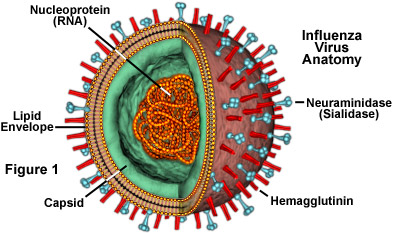
The Food and Agriculture Organization of the United Nations (FAO) is receiving more funds from USAID to fight serious flu epidemics and other serious pandemic threats, according to the UN agency.
The funding totals approximately $20 million and will be used to provide continued support to the US-FAO partnership to fight H5N1 highly pathogenic avian influenza (HPAI). This increased assistance also will boost the preparedness and response to another flu, HPAI in Southeast Asia, and will increase lab and surveillance capacities in at risk areas.
Most of the new funding will be used for activities to support public health in Bangladesh, China, Indonesia, and Vietnam. All of these countries continue to have public health problems with H5N1 HPAI in chickens, and also some cases are occurring in humans, and a few have been fatal.
Some of the added funding from USAID will be used for regional efforts to fight avian influenza and to support public health activities in Lao PDR, Nepal, Cambodia and Myanmar. All of these countries are under threat from the disease because avian flu continues to persist in several other countries around these countries.
The countries in this area continue having occasional outbreaks. This indicates that the H5N1 virus is still circulating in chickens and is a serious threat to poultry production, human health and the livelihood of millions of poultry farmers.
For many years, the US government has been important in garnering international support to fight avian influenza and to cut the chances of a serious human pandemic. They have done this by helping FAO and other organizations to address the flu threat in animals before it causes problems in humans.
This kind of support in basic public health prevention is very sensible and cost effective.
Due to efforts such as this USAID-FAO partnership, science has gotten a much deeper understanding of what causes serious diseases, such as avian influenza, to thrive and to learn what public health measures to take to prevent serious outbreaks.

Recently USAID launched the Emerging Pandemic Threats program, which was done in response to outbreaks of H5N1, SARS and the H1N1 influenza outbreak in 2009. Through this program, financial support is provided to countries to boost the capacities of lab networks to diagnose different types of influenza viruses.
This is very important in Southeast Asia, where we see new strains of viruses often. These eventually can develop into a serious threat for human health and cause the loss of large numbers of poultry. Also, these viruses can adapt, and poultry vaccines for H5N1 can become less effective over time. This leaves domestic poultry very vulnerable to diseases. Some of the biggest risk factors for influenza virus outbreak are large populations and population density. This is why southeast Asia is considered to be such a hotspot area. This is because it has high population already and a high rate of population expansion. More and more people and animals are living closer together, which causes health problems to occur.
In China, it has almost half of the pigs of the world, and about 25% of the chickens. It also has 70% of the ducks and 90% of the geese. Close contact among these animals and humans gives many chances for serious flu viruses to spread from many hosts, and the chance to jump from species to species.
Also, mixing wild animals and domestic animals is a concern. It is a common practice in many smaller animal production facilities in China and other countries in southeast Asia. Also, growing populations in Asia are driving a higher demand for more meat and other animal products, so more animal farming is being done, which can also lead to flu outbreaks.
For these many reasons, the USAID-FAO partnership has been provided with additional funding to hopefully reduce the incidence of serious flu pandemics in Asia and other parts of the world.













